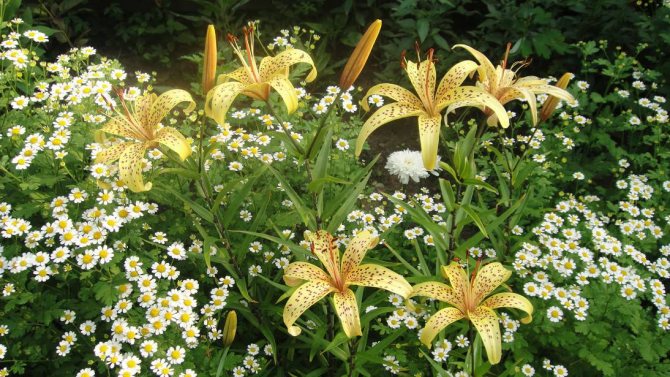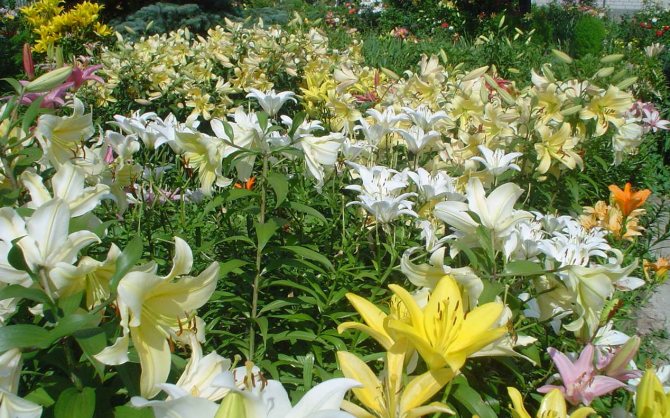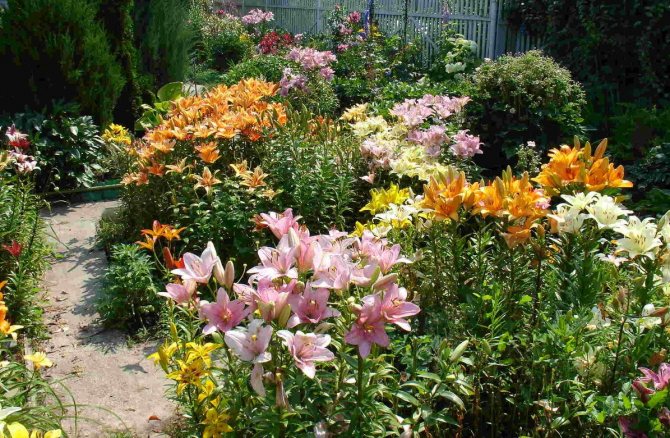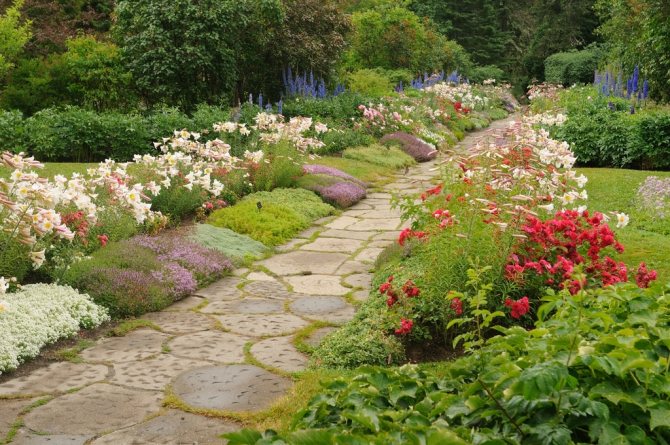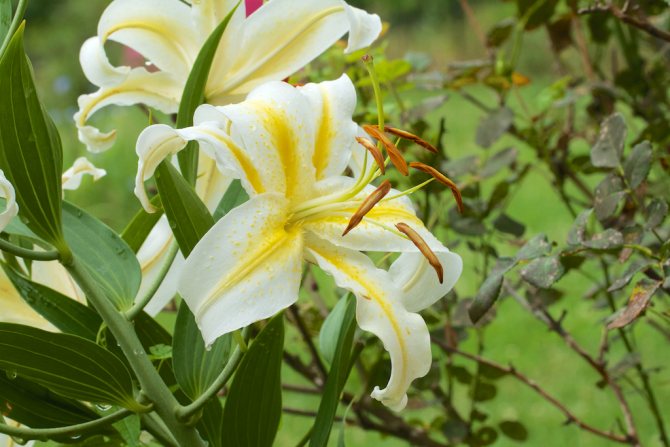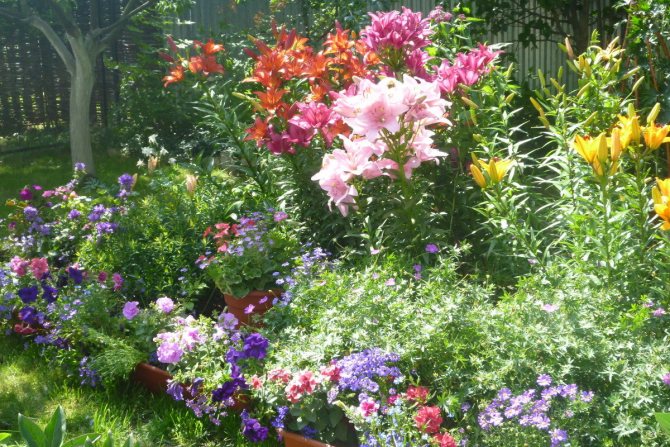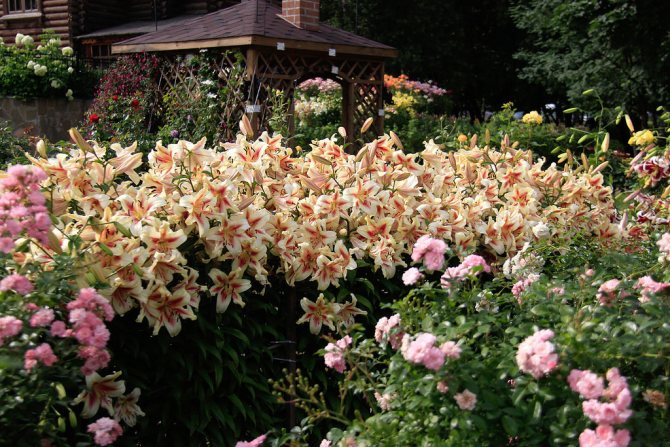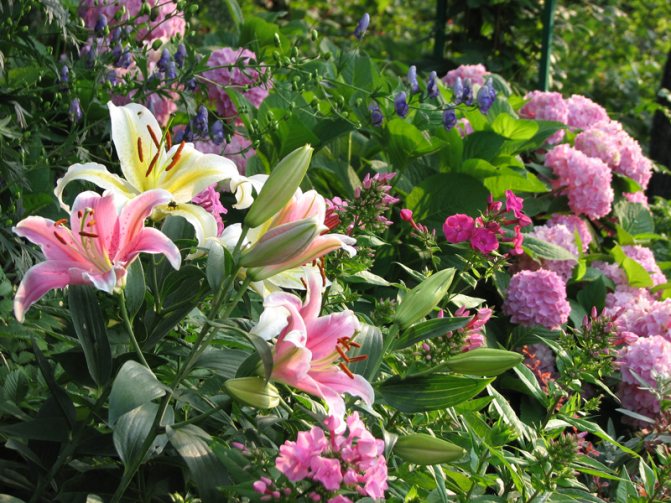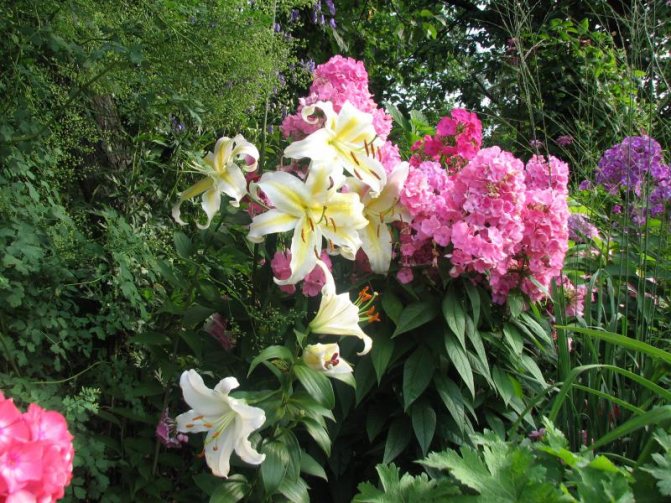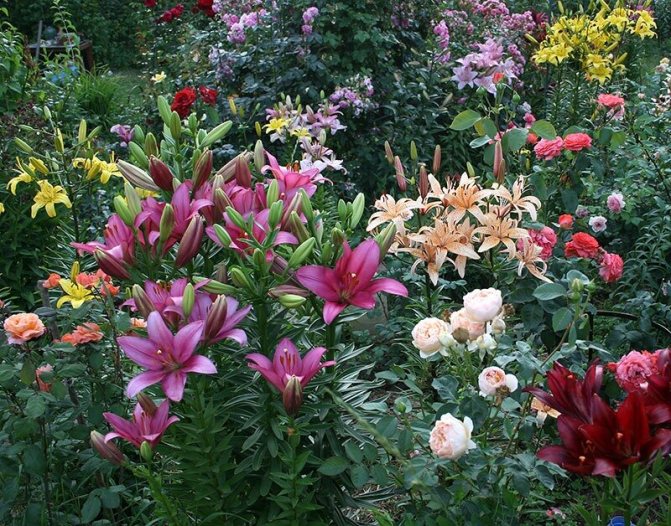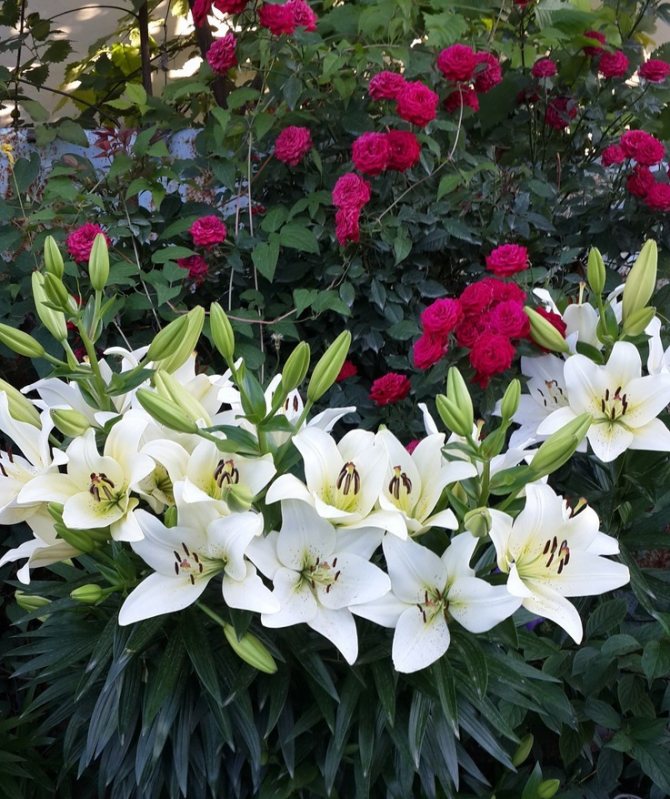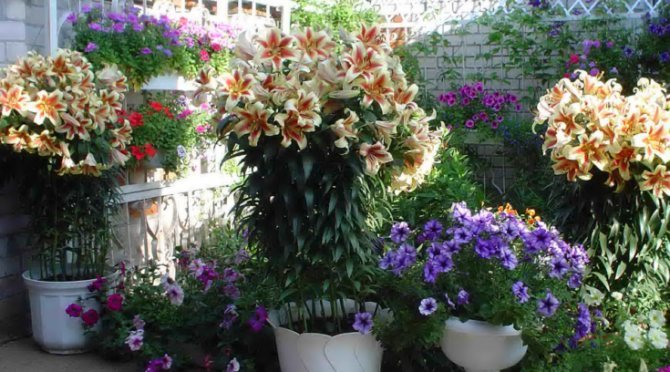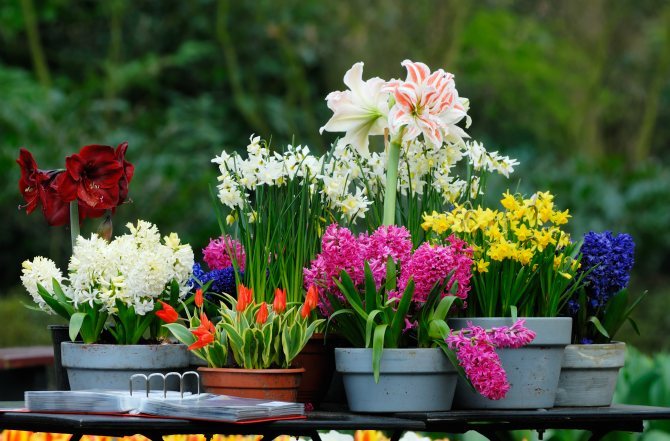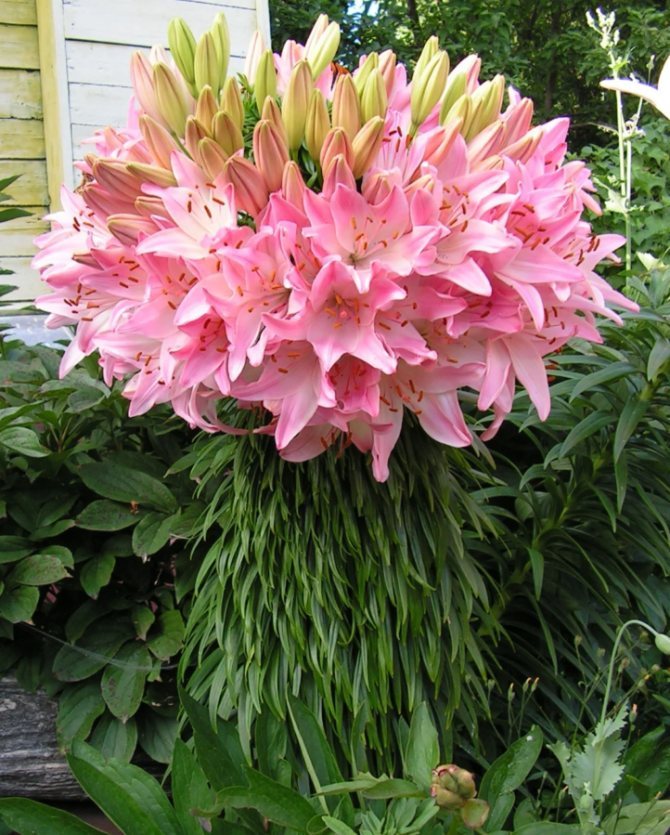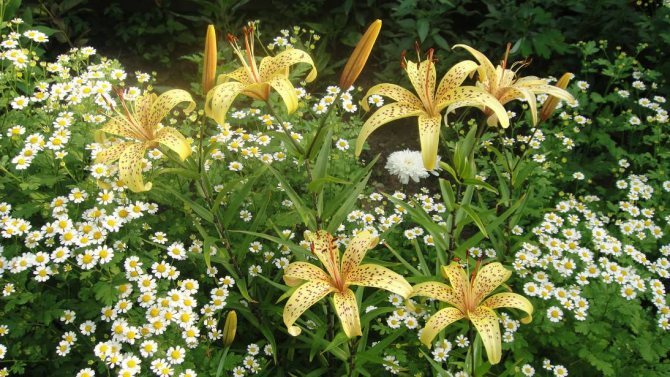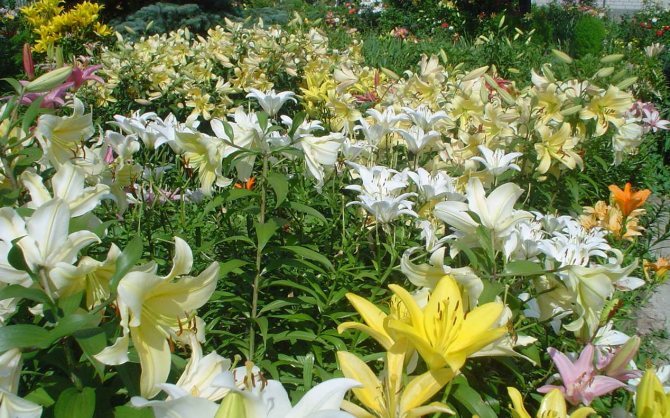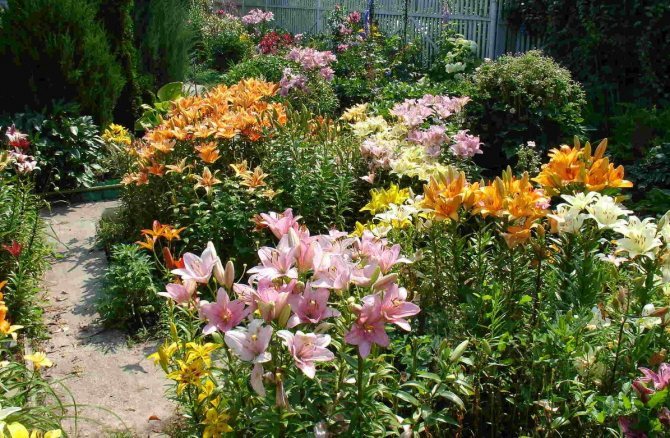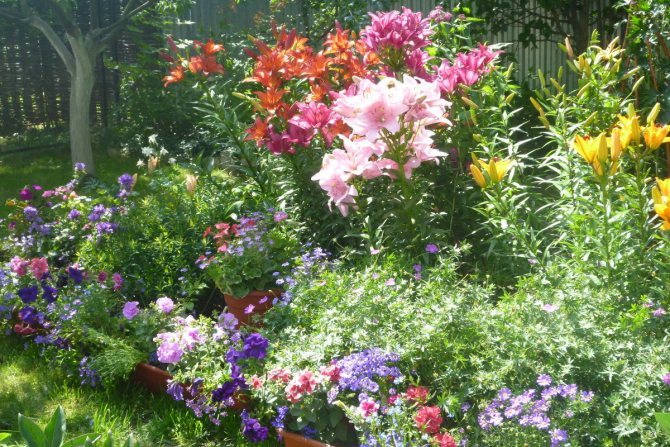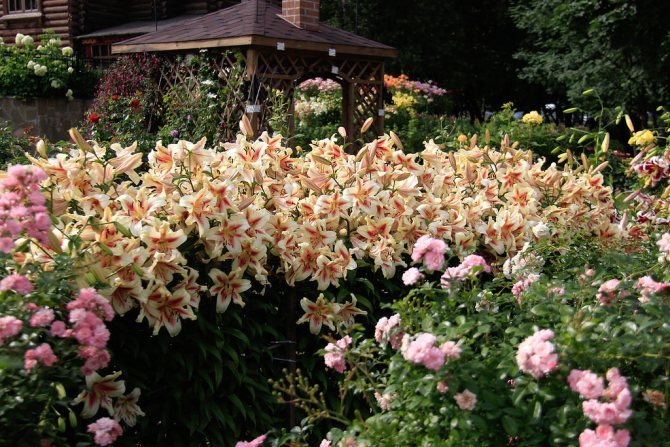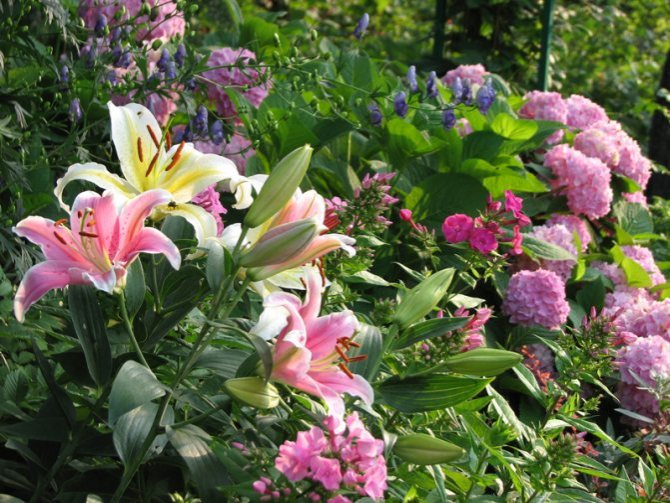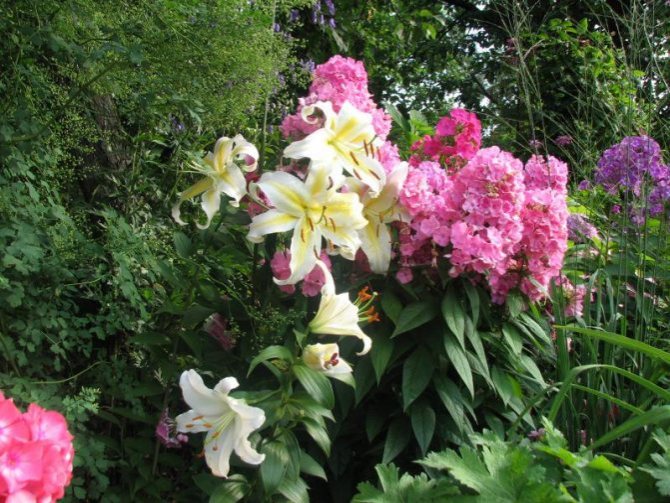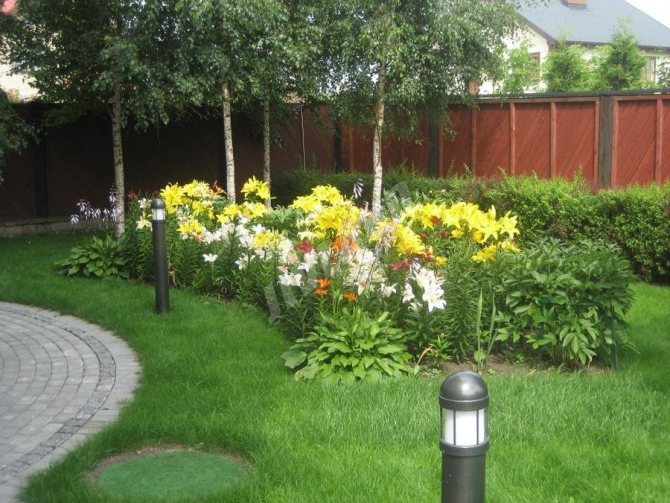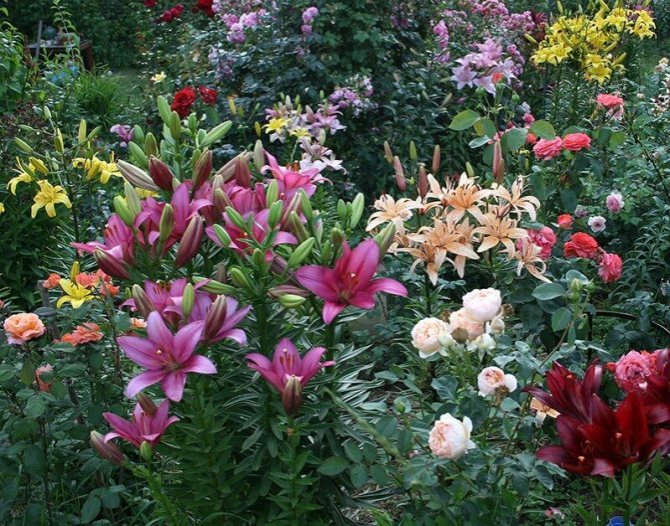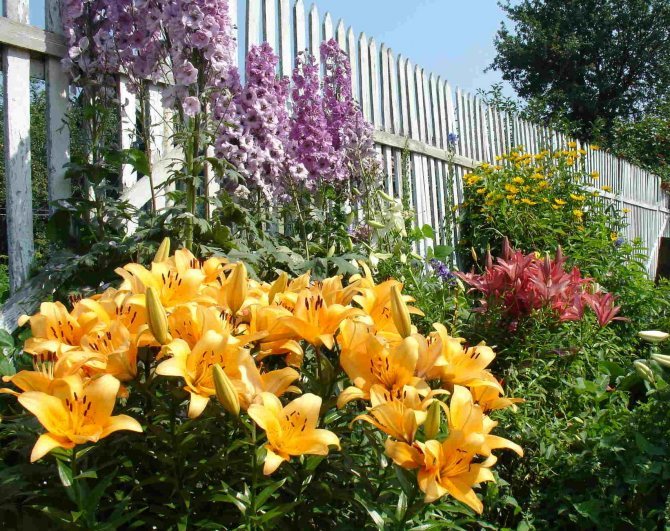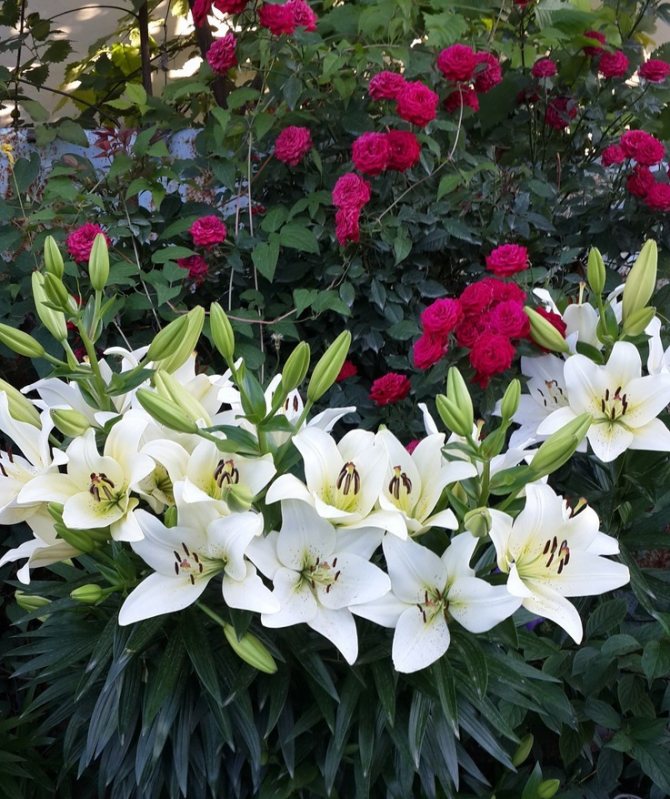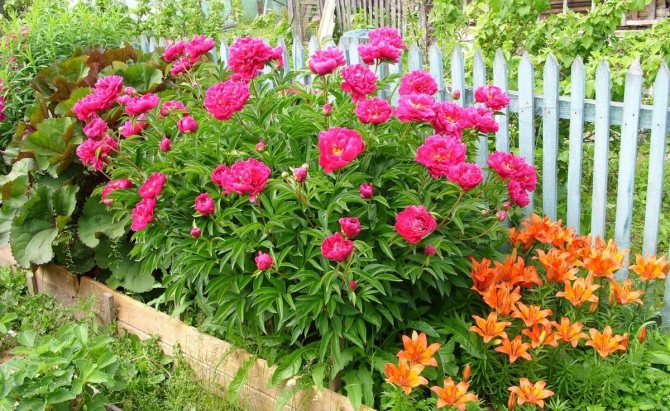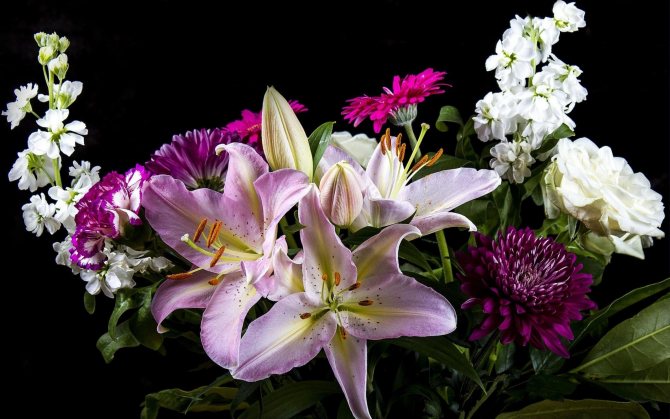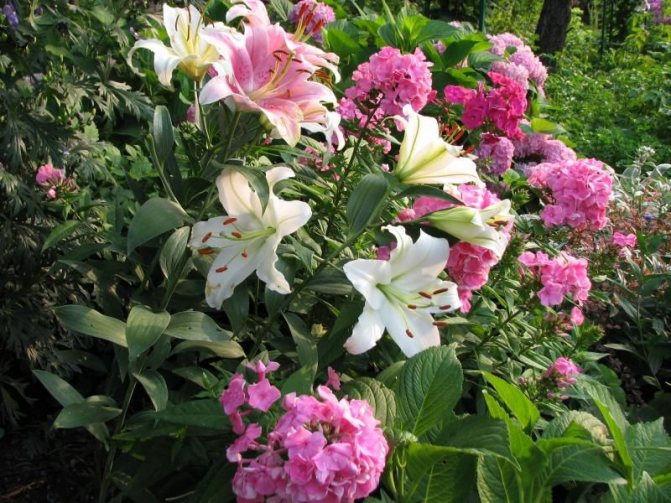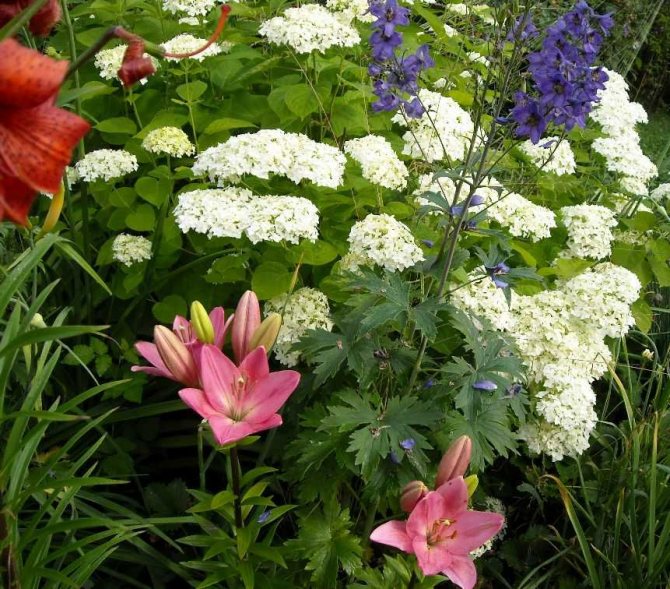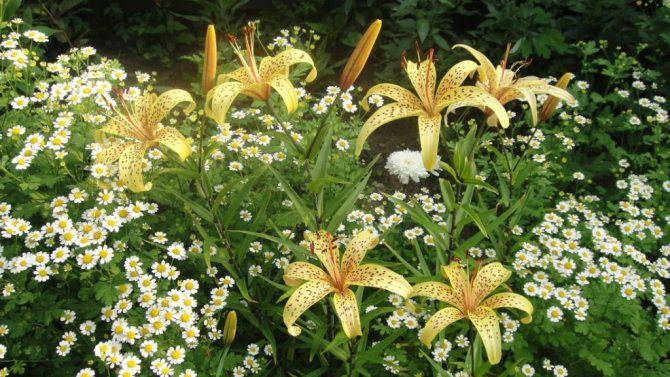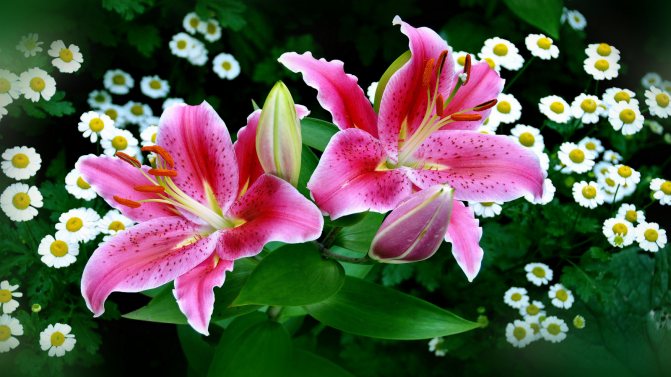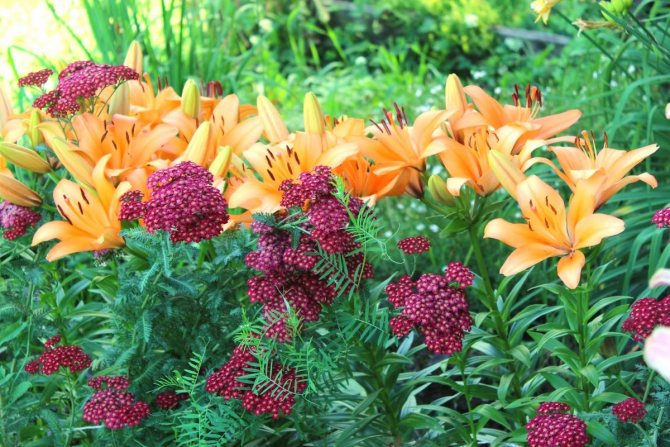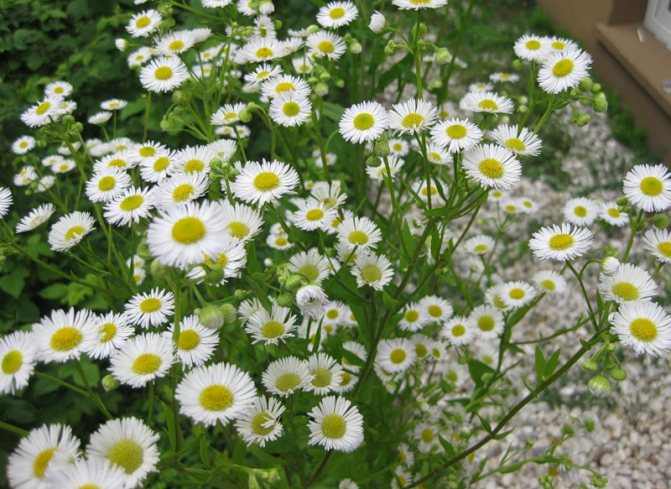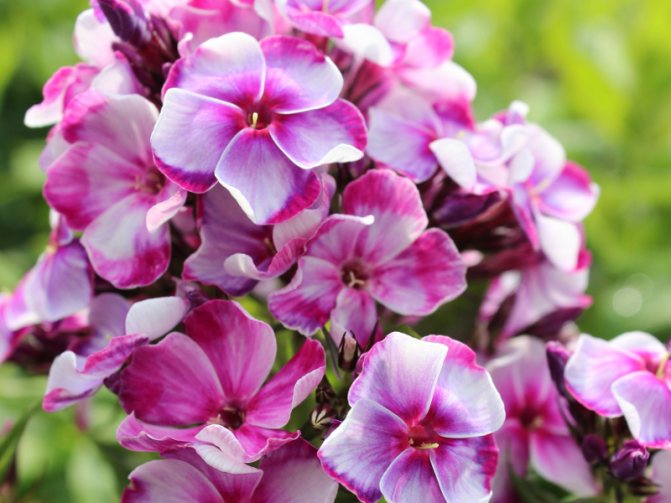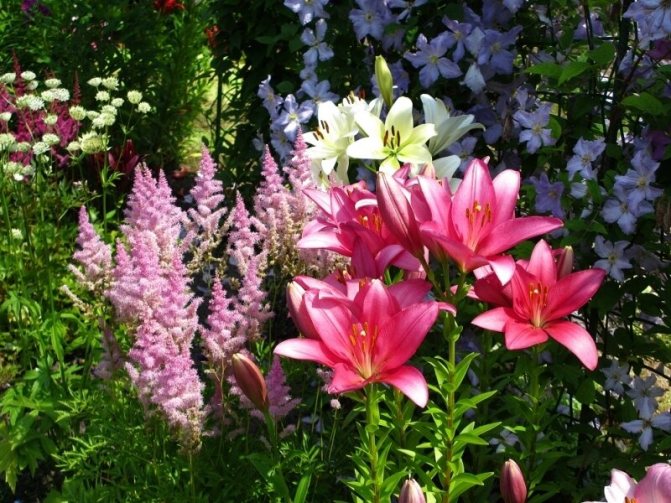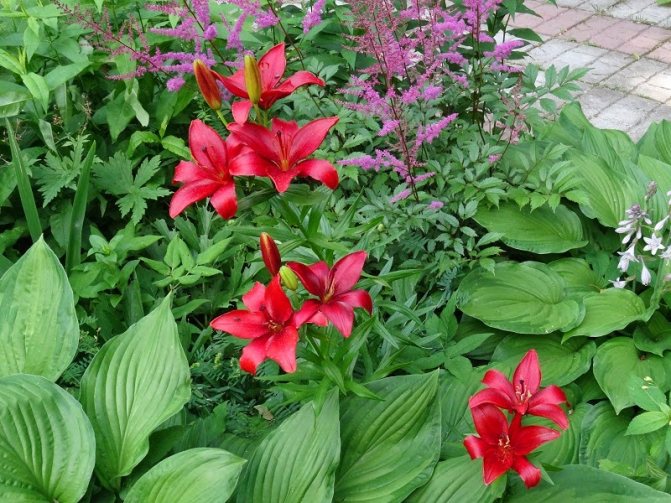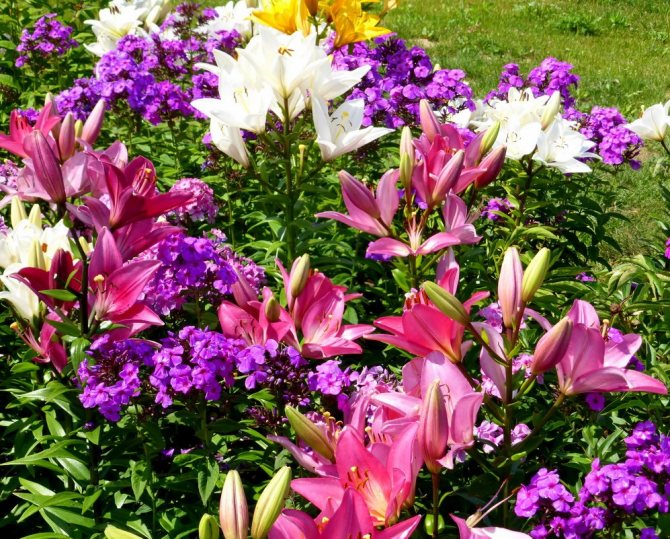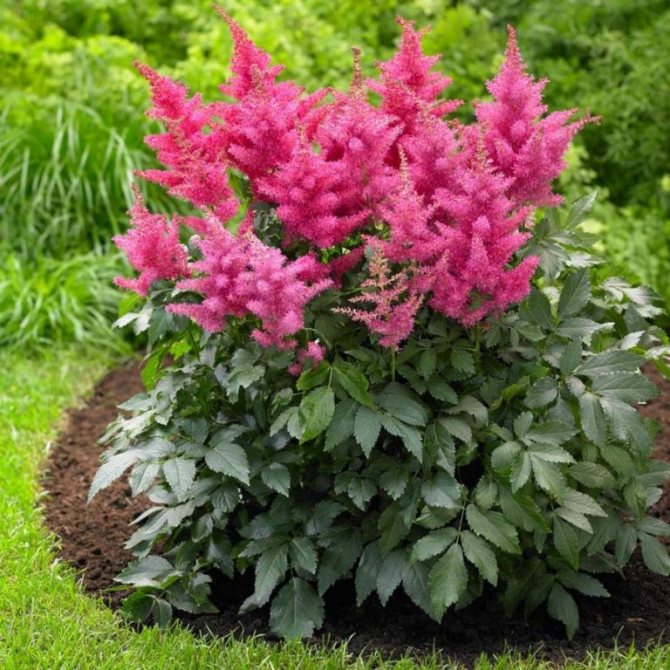Added on 02/06/2015 bulbous, combinations No comments
Decrease text size Increase text size Text size Print Email
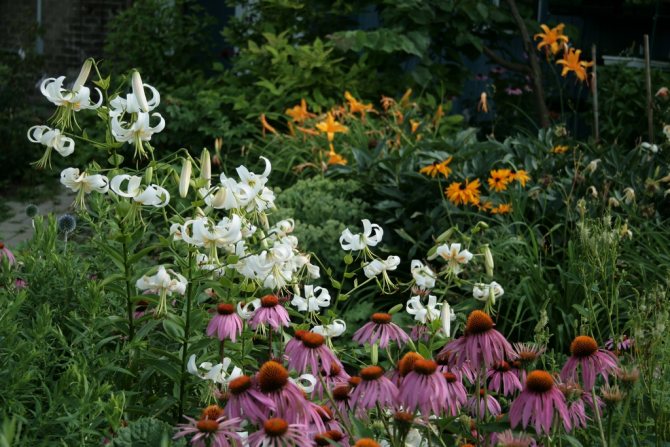
These flowers are so good that at all times they have been an object of worship. Since ancient times, among different peoples, lilies have been considered a symbol of hope, mercy, purity, devotion, pride, wealth. Many legends have been written about them and many amazing stories have been told.
But then there were no incredibly beautiful tubular lilies and hybrids. By the way, our harsh winters endure many of them normally. And if you can't surprise anyone with the sight of ordinary tiger lilies, then having grown two-color lilies of the Shocking and Anastasia varieties or the orange Indian Diamond, you can consider yourself one of the gardeners who managed to conquer the obstinate nature of the capricious beauty. Usually, after the first successful experience, it is very difficult to stop: you want to buy and plant more and more new varieties in order to admire the beautiful flowers for as long as possible. But more often than not, a novice gardener is surprised to find that it is not so easy to create a lily flower garden that will look good all summer long.
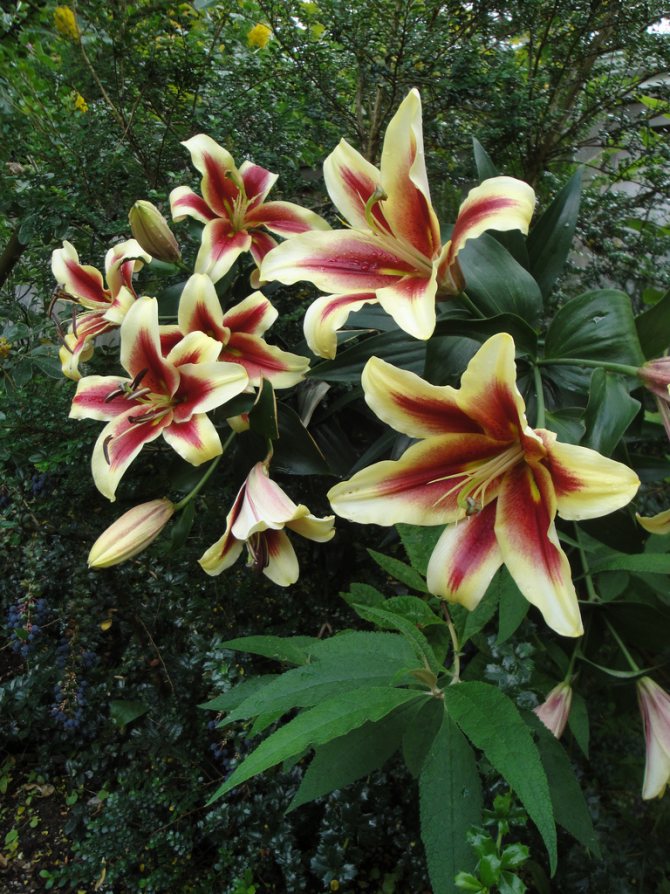

Lily bicolor 'Shocking'
Lilies in the garden
The lily palette is incredibly diverse. Which makes it possible for a large number of options for using these colors in landscape design. Depending on the variety, and they are both tall (up to 2 m) and miniature (0.5 m), they can be placed in the foreground as a border or behind lower flowers, like tapeworms.
Large lilies planted along the fence look good as a boundary for the area of the site.
Beautiful tall lilies next to conifers and shrubs with small leaves - barberry, mahonia, euonymus, boxwood. This kind of flower bed with lilies is in the photo below.
The tone, shape and texture of lily leaves differ from cultivar, and these nuances can be applied to create contrast with other plants. The lily beds presented in our article give a complete picture of how it will look during the flowering season.
A skilful combination of different types of lilies allows you to admire the flowering of royal flowers until autumn, especially if you combine them in mixborders or rabatkas, next to annuals.
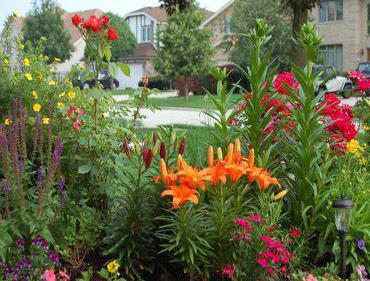

The best modern varieties of lilies
Lily variety Marlene (Marlene)
Lily variety "Marlene" belongs to the Asian group. The plant blooms from late June to early July with large flowers reaching a diameter of 20 cm. The petals are soft pink at the edges, and creamy white with red dots closer to the stamens. Stems are dense, bright green, up to 1 m in height. Leaves are oblong, pointed, up to 15 cm in length. The variety is prone to fasciation, as a result of which several shoots are formed from one bulb.
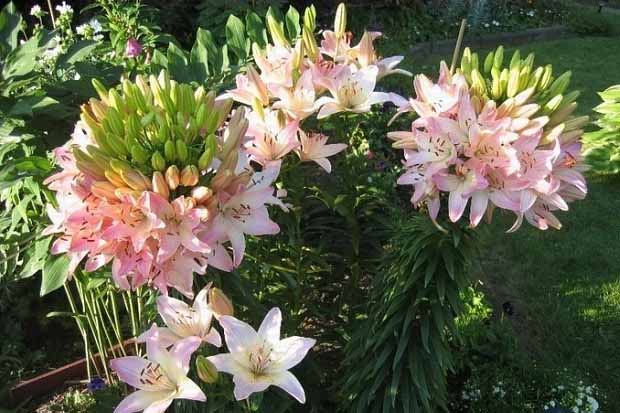

Lily variety Magic Star (Magic Star)
Variety "Magic Star" belongs to the eastern group of lilies, it is distinguished by fragrant and lush terry blooms of an unusual color. The petals are pale pink, with a bright crimson spot in the center and a dark red speck, bordered by a white stripe. Stems up to 1 m in height, flowers up to 20 cm in diameter, without anthers. The flowering period is from late July to early August.
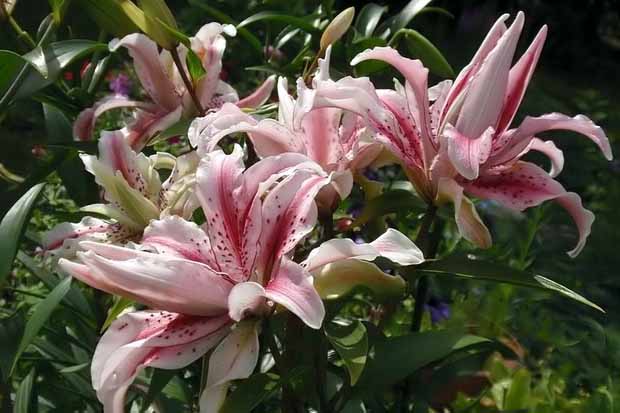

Lily variety "Lion Heart"
The Asian variety "Lion Heart" surprises with its original black-violet color of petals with a yellow base. The inner part of the flowers is covered with purple dots. Oblong, pointed dark green leaves grow on 80 cm stems. Petals with a lilac tint, their length is 6-8 cm. The flowering period is from late June to early July.
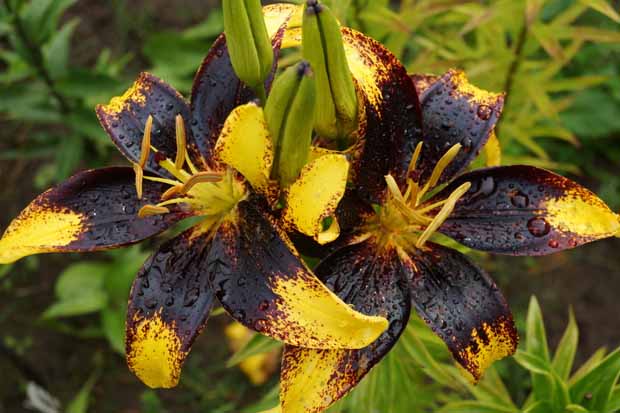

Lily variety Flore Pleno (Flore Pleno)
The peculiarity of the Asiatic lily "Flore Pleno" is its bright orange curled petals with dark brown specks, reminiscent of a brindle color. Stems are high, up to 1.20 m. Blooms in July. Bulbs are formed in the leaf sinuses, which can later be used for reproduction.
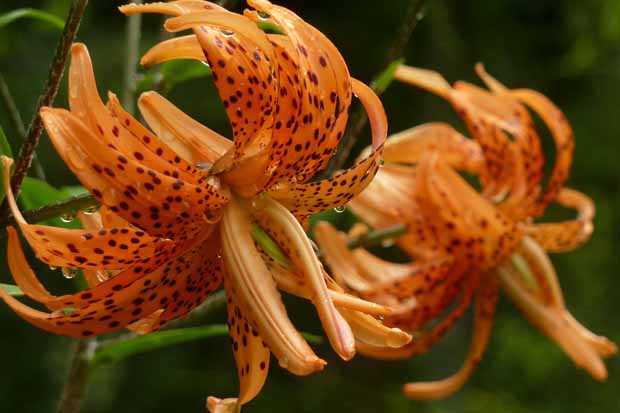

Shocking lily variety
The Shocking variety belongs to the hybrid tubular group. Stems up to 1 m in height, densely covered with rich green leaves. Flowers are multiple. The petals are yellow-peach in color with a red spot in the center; closer to the stamens, they are covered with bright red specks.
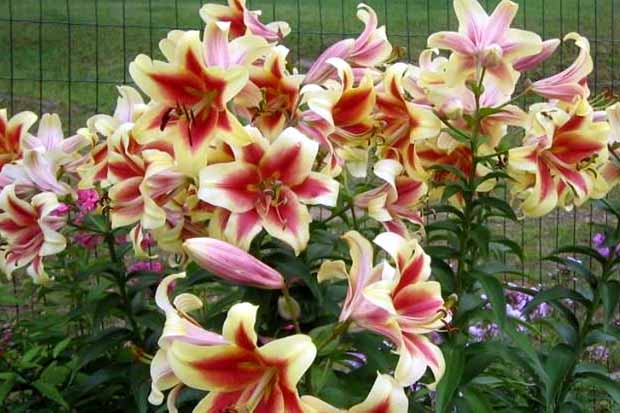

Lily variety Black Out (Black Out)
Lilies of this variety belong to Asian hybrids - tall, reaching 1.25 m in height. Flowers up to 18 cm in diameter are dark red, glossy, sprinkled with small dark specks. A dark purple vein runs along the center of each petal.
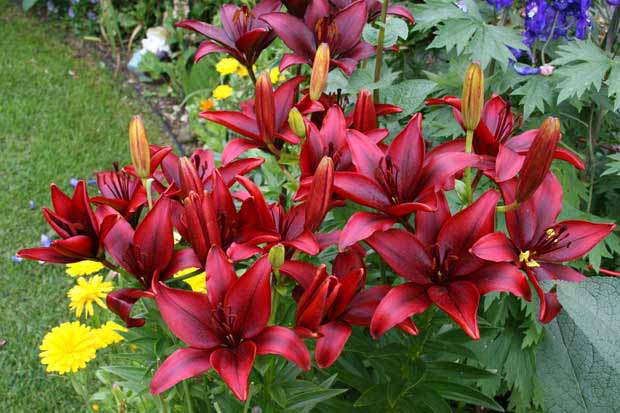

Beautiful flowering conditions
Lilies tolerate partial shade and thrive best on neutral soils. Choosing neighbors for them, you need to give preference to moisture-loving plants, since lilies love moist soil, but without stagnant water.
At the end of flowering, the leaves of the lilies wither and look unaesthetic. Lower and lush bushes of marigolds, wormwood, liatris, heuchera or annual ground cover phlox mask well withered stems and leaves. They will serve not only as a good background for lilies that have entered the time of flowering, but also mulch the ground around them from drying out.
For the same purpose, lilies are surrounded by ferns, hosta. It is not at all difficult to build such a flower bed with lilies with your own hands.
In the spring, it is recommended to moisten the soil under the lilies with a solution of calcium nitrate and apply complex fertilizer. At the end of flowering, in order to provide the bulbs with strength for the next year, the ground under the lilies must be watered once again with liquid phosphorus-potassium fertilizer.
The main disease of lilies is botris, or gray rot. A disease-causing fungus attacks the bulbs if they are too closely planted and the soil around them is excessively moist and compacted. For the prevention of botris, the soil at the base of the peduncles must be regularly loosened with a pitchfork, and in the fall, thin out overgrown bushes. Only in this case will a flower bed with lilies decorate your summer cottage for many years.
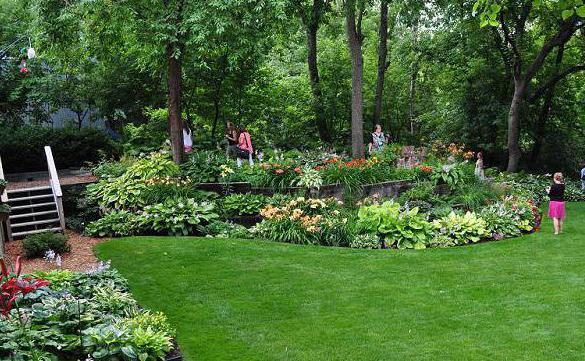

Popular combinations
Climbing roses are often planted against the background of a high wall, and lily bulbs are placed in front of them. This is beautiful, but only suitable for large spaces, for example, near the porch of a house or around a gazebo. In these places, children often play and can trample small plants, and tall lilies are allowed to be planted near the wall, under the branches of roses. In such a neighborhood, they will feel quite good. Plant a few hosta bushes at the roots. The plant wonderfully mulches the ground and grows so that it will be rather difficult not to notice and trample it, as well as the stems of lilies stretching out from under its wide leaves. A beautiful flower bed with lilies surrounded by a host is also presented in our material.
What to plant with
Lilies should not be planted next to irises. Despite the fact that they have different flowering times, and in appearance these plants seem to be compatible, such a neighborhood will adversely affect both. The fact is that faded irises should never be watered. Their main root, located on the surface of the earth, will quickly rot, and lilies during the flowering period require regular moistening of the root section of the soil.
The second unfortunate neighbor of the lily is the tulip.These flowers have common diseases. In addition, tulip bulbs invariably attract the attention of mice. Having poured tulips, they at the same time gnaw on lily bulbs. And they, especially varietal ones, are very expensive and are rarely available for sale. If you want a flower bed with lilies to delight with flowers all summer, starting in spring, plant daffodils or a grove near it.
Experienced gardeners, who do not want to part with tulips, dig in lily bulbs along with plastic or metal cans. With their walls, they block access to them for both mice and other pests.
The jar is trimmed at the top and bottom and hammered into the ground around the bulb with a hammer. This will subsequently make watering more difficult, but will keep valuable specimens from garden vandals.
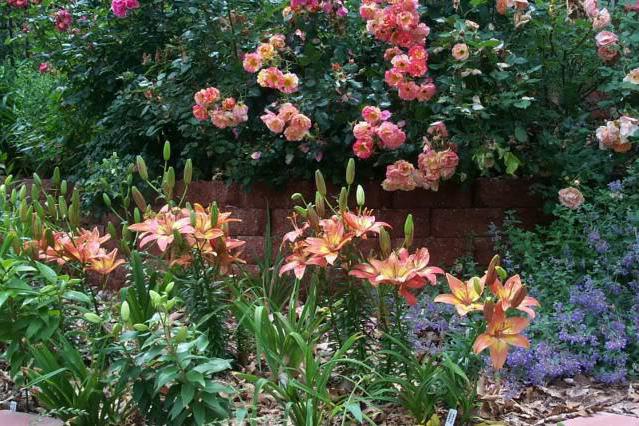

What is the uniqueness of the plant
Many gardeners do not hesitate to plant luxurious lilies of various varieties in the garden or in the country. Some just like them, others are crazy about the delicate aroma and height of adult bushes. If we operate with facts, most note such unique features of a flower as:
- beautiful view both during the growing season and during flowering;
- a good combination with other annuals and perennials in the flower bed;
- delightful aroma of buds;
- many of the most incredible colors, including unusual - light green, almost black;
- unpretentiousness in cultivation and care.
Also, the advantage of lilies is that garden flowers are propagated by bulbs, they are a perennial crop. And they also look beautiful both in single plantings and on flower beds with roses, chrysanthemums, low-growing annuals and ornamental shrubs. In general, whoever is still only deciding to breed this perennial plant on their site should not hesitate. Bright flowers will decorate any corner of the cottage or the local area, add charm to the flower garden.
Lilies under the tree
Lily is one of those plants that can be planted under tall trees right along the perimeter of the trunk, stepping back 50 cm from it. This is not only beautiful, but also very practical - watering lilies, you will water the tree as well. It will also take away excess water, which can harm the bulbs.
When choosing a combination, do not forget to clarify whether the flowering of the queen of the garden coincides with the ripening of the fruits on the tree under which she is planted. Falling apples or pears will easily break the flower stalks, and all your hopes for a luxurious flower bed with lilies, fragrant with a delicate aroma, will go to dust.
Framing paths
Lilies do not like crowding, but they require camouflage of the stems. After all, after the flowering period ends, they will lose their decorative effect. Both of these tasks will be successfully performed by medium-sized garden flowers, for example, coleus, primroses, lobelias, if you plant them in the foreground of a flower bed with lilies.
Primroses begin to bloom in the spring, when the lilies are just starting to grow. After flowering, these bright perennials will leave a miniature rosette of leaves, which will not in the least spoil the view of a flower bed with lilies in the country or in the front garden, in front of the windows of a city house.
Lobelias begin to bloom in June and remain decorative until the end of September. Their spherical bushes with bright scarlet or blue flowers are not only very decorative in themselves, but will be wonderful neighbors for lilies. Red lobelias are best combined with lilies of the same shade or with white ones, and blue - with almost any. How cute they look in a flowerbed with lilies in the country! The photos presented in the review prove this.
It is good to scatter Escholzia seeds between the bushes of tall orange lilies. Its small orange flowers will not only decorate the lilies and emphasize the nobility of the large-flowered tiger varieties, but will decorate the flower beds with lilies in the country until winter, because the Escholzia bloom often lasts until the end of November.
You can preserve the attractive appearance of the path for a long time by planting bushes of low ferns among the lilies. You will get such flowering ferns from an old legend.
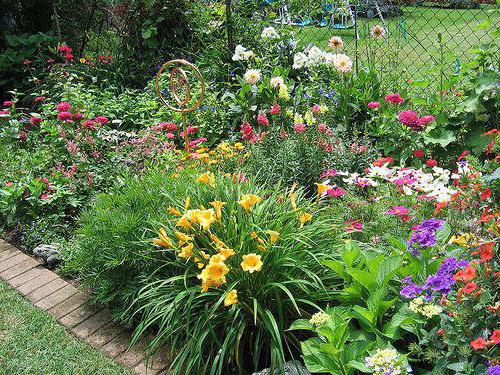

Bulbous perennials in the vicinity of other plants
It is not necessary for a long time to think about which flowers the royal lilies are combined with - they look great next to any plants in the country and in the garden. You can plant them next to conifers, ornamental shrubs, annuals, and other perennial crops. The main thing is not to mix all the flowers in one pile, choosing the flowering time and suitable colors of buds and petals.
Landscaping experts advise planting lilies with flowers, bushes and herbaceous plants such as:
- delphiniums;
- peonies;
- roses;
- thuja;
- hosts;
- juniper;
- rhododendron;
- barberry;
- bells and daisies;
- phlox.
The ornamental leaves of the earlier blooming peony will accentuate the beauty of the lily buds during the summer. In the same way, any conifers and deciduous bushes with monochromatic foliage will set off the brightness of the petals effectively and beautifully. Variegated shrubs must be combined with lilies carefully. This recommendation also applies to hosts with white spots, stripes on the foliage.
Bright lilies can be combined with plants that have small white flowers - alyssum, Iberis. The buds of blue or blue delphinium, graceful eustoma, delicate pink astilbe will shade well. More accurately it is necessary to combine lilies with roses so that they do not "pull the blanket" over themselves, overshadowing the beauty of the bushes.
The photo below shows examples of the correct combination of lilies with garden plants.
Flowerbed without weeding
The need for regular weeding near lilies often makes gardeners refuse to plant lilies on their plots. Rough weeds quickly clog the delicate shoots of lilies, and they soon stop growing altogether.
We offer you to make flower beds of lilies with your own hands, among the plantings of rhododendrons and astilbe.
A large flower bed in the middle of the garden, on which these large plants flaunt, will harmoniously perceive the neighborhood with lilies. Astilba takes root quite deeply, therefore, in a short time, it quickly and permanently displaces all the weeds that used to grow in this place. In such conditions, lily bulbs will feel absolutely excellent. Lush rhododendrons will distract attention from the unsightly stems of lilies, and the flowers of the lilies themselves will look especially noble against the background of the wax leaves of rhododendrons.
If the sight of bare ground seems dull and uninteresting, then it can be covered with a layer of well-dried and crushed tree bark.
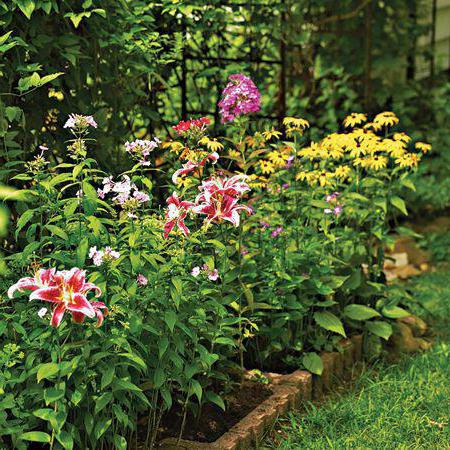

Combination with small-flowered
Large glasses of lilies look incredibly attractive and aristocratic against the background of plants with small flowers. Plant a yarrow next to them. It comes in many varieties with white or pink buds. Delightfully combined with lilies yarrow ptarmica. Don't like yarrow? Replace it with Perennial Iberis. The effect will be the same.
A lily bush surrounded by small balls of tall pearl anaphalis or a fluffy bush of small-flowered gypsophila looks very decorative. The twigs of these plants, they are also called "pearl mussels", are often added by florists to bouquets with lilies or roses.
Fragrant alyssum or mattiola will hide the unsightly lower branches of the lily and, mixing with its scent, create a divine cocktail of scents. Arrange this flower bed near the window of a house or veranda and in the evenings you will enjoy the scent of paradise.
Lawn decoration with lilies
In large landscaped gardens, where the lawn is combined with ornamental shrubs and trees, medium and short lilies are planted on green lawns and along paths.Varieties of lilies for lawn planting are selected so that they stand out well against the background of the grass due to their bright color - these can be Asian lilies, hybrids of rich orange or red tones.
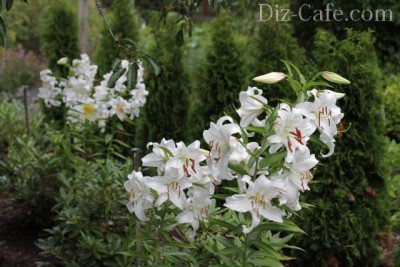

A strict, expressive tandem is obtained by combining white or any other light-colored lilies with evergreens and conifers
For borders, you can use low types of any color. An impressive duo is formed by lilies and coniferous evergreen shrubs such as juniper. Lilies are planted both in front and on the sides of the conifers, and if you use high varieties, then also behind the shrubs.
Lilies are also planted next to geykher - compact bushes with decorative foliage and long peduncles. More about this plant:
Combination with decorative leafy
This option will appeal to those who love brevity or have a sufficient number of bright mixborders and rabatoks in the garden. Next to them, a flower bed with lilies will stand out against the background of decorative deciduous plants, so we recommend using this option for zoning a recreation area near a gazebo or a barbecue area. Alternatively, plant the selected plants along the path that leads from the house door to the gate. On the back line, let there be tall lilies, and in the foreground - a strip of gray seaside cineraria, with velvet carved leaves. Heuchera with colorful leaves and small flowers can be an alternative to cineraria, it will ideally emphasize the noble bells of lilies during flowering and hide the unsympathetic stems of already faded garden queens.
Continuous flowering flower bed
What gardener doesn't dream of a perennial flower bed that blooms from spring to late autumn? You can make such a flower bed, but you still have to take care of it. We will show you how to minimize the effort of caring for a flower bed with lilies.
A large number of plants planted nearby quickly depletes the soil, therefore, once a winter and once before flowering, it will need to be fertilized with appropriate minerals. Well, in the summer she will need watering and only occasionally - loosening.
Lilies are the center of the composition of our continuous flowering flower bed. The next circle is planted with bulbs of daffodils, crocuses, hyacinths. Primroses are in between. Plant pearl oysters in between, and groundcover asters in the next circle. Thus, you will get a flower bed that will delight with flowers from early spring to late autumn.
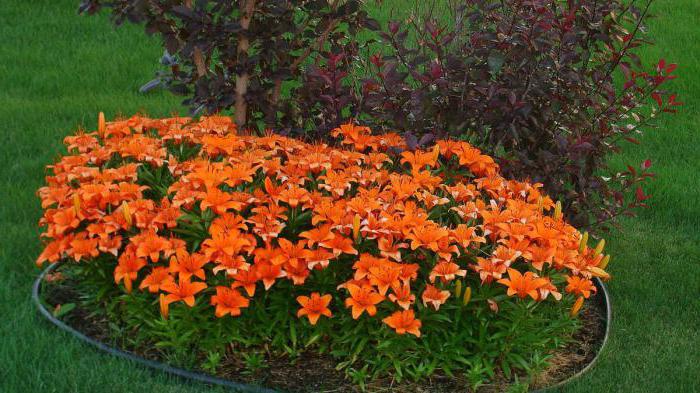

Zinnias in landscape design
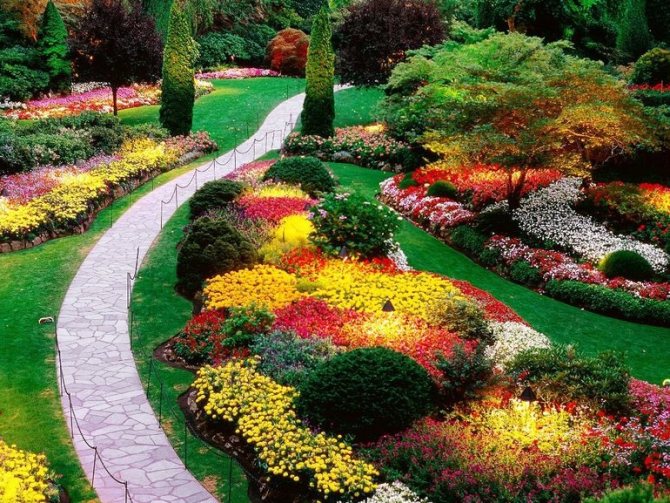

Zinnias are prized by flower growers and designers for their versatility. These flowers can be used for planting in various flower arrangements, as well as for decorating green spaces.
Low-rise zinnias are great for curbs and for growing in containers on the balcony. They are actively used to create flower beds and alpine slides. Vibrant plants provide a wonderful contrast to green spaces such as hop shoots. If zinnias are planted around tall dahlia bushes, they will favorably emphasize the center of the composition. The flower beds, made up of annual and perennial varieties, allow you to get excellent flowering throughout the summer.
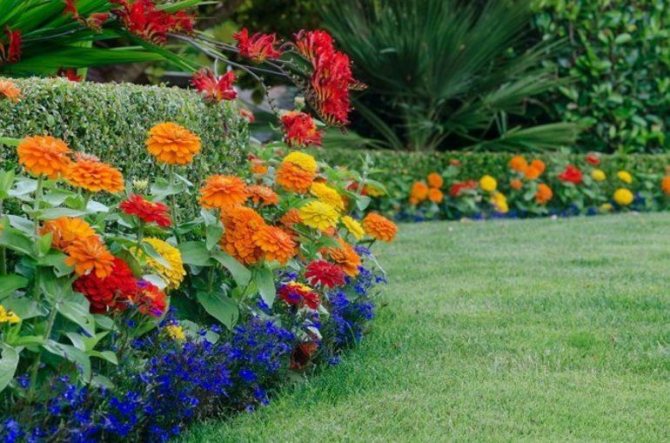

Lilies and hosts
This very successful combination is especially loved by landscape designers. Hosts cover unsightly lily stems with their large leaves. They grow rather slowly and do not cause problems for gardeners with weeding, and the large leaves of one bush can cover a whole square meter of the area around the lilies. So that in the spring the land in the flowerbed is not empty, because the hosts wake up quite late, plant snowdrops, muscari or crocuses on it. They do not bloom for long, so the hosta leaves overgrown in summer will not interfere with them. With a minimum of effort at the very beginning, such a flower bed will look well-groomed and decorative for many years.As they say, planted and forgot.
Lilies and conifers
Lilies are successfully combined with low-growing coniferous shrubs. Against the background of juniper, thuja, dwarf pines and cypresses, lilies look very impressive. Since the period of their flowering is quite short, it is advisable to plant different varieties with large flowers and with different flowering periods at a distance of 1.5 m from each other, and plant small-flowered climbing roses between them.
Conifers creeping along the ground will keep the ground moist longer, but will not impede the movement of air.
Some experts object to such a combination, because conifers, roses and lilies require soil of different composition, but here the solution is quite simple: individual fertilizer complexes must be laid in the planting hole of each plant. Almost a meter distance between them will allow you to create suitable conditions for each individually. In the meantime, the conifers have not grown, fill in the voids with spring, summer and autumn one- or perennials.
Such a flower bed will take up a lot of space, so arrange it in advance so that later it does not interfere with movement in the garden and is clearly visible from different angles.
how beautiful to plant lilies
Secondly, it would be effectively visible from all sides, it would be decorative throughout the season from April to November.
In the spring of 2011, I got down to work. Once upon a time there was a rectangular garden with vegetables (2.5m x 5m) on the site of a flower garden. And although the approximate territory of the flower garden was determined, it was necessary to work with its contours, avoiding corners and sharp transitions (which, as you know, are not characteristic of nature).
Since there is an alpine slide next to the flower garden, made several years ago, I decided to also use stone (limestone) in my new garden composition. Although, of course, you cannot call the resulting flower garden an alpine slide. The assortment list of used plants is still more suitable for a flower garden. And the tiers present in the flower garden are not as steep as on the hill. However, the stone gives the flower garden its "zest" (especially in spring, when there are still few plants on it) and visually unites the composition with the nearby alpine hill.

